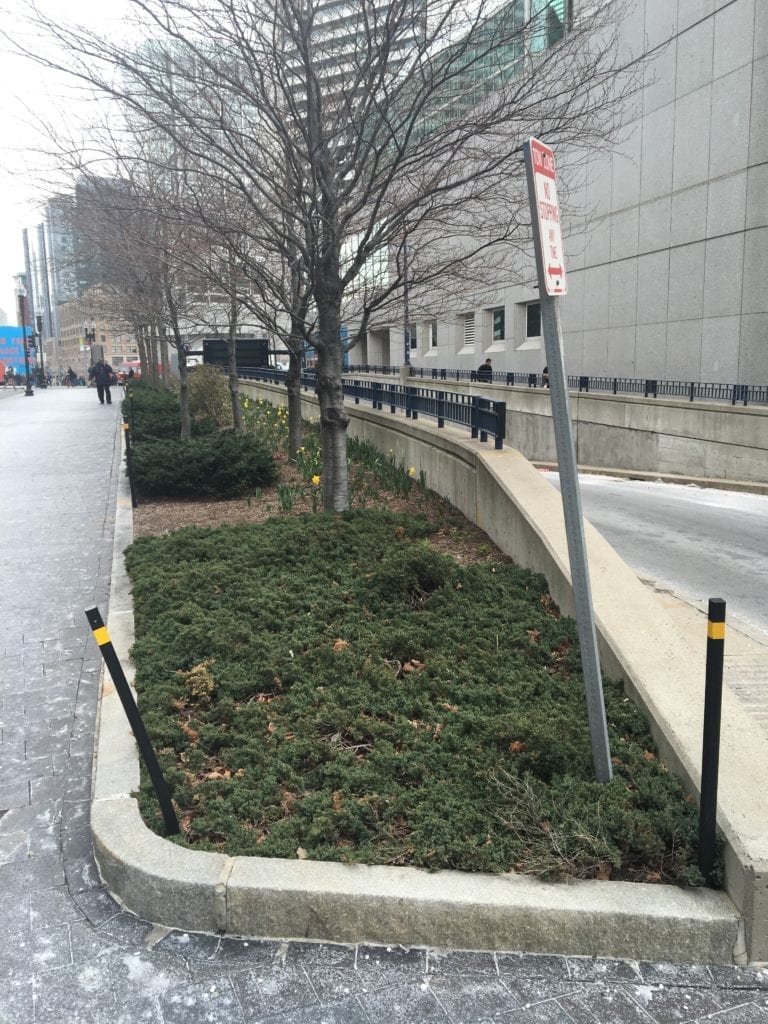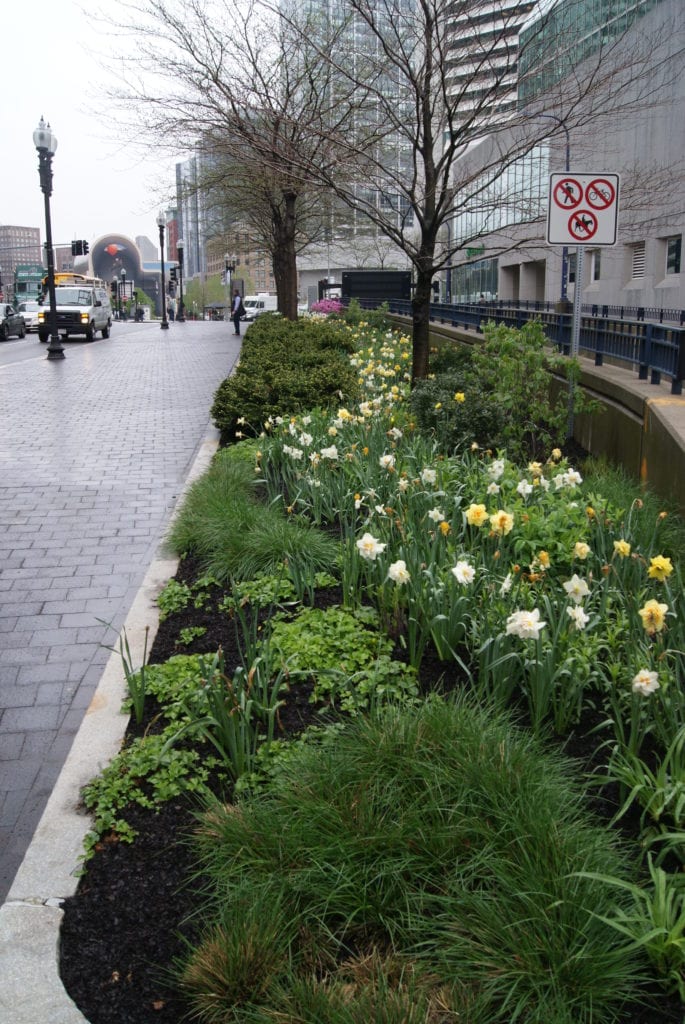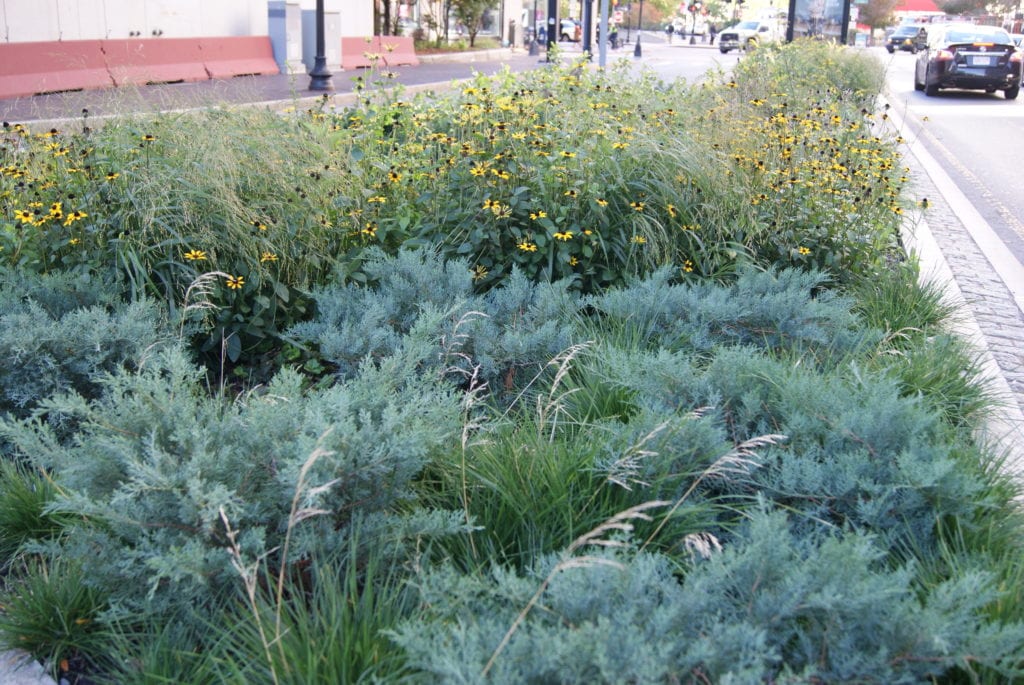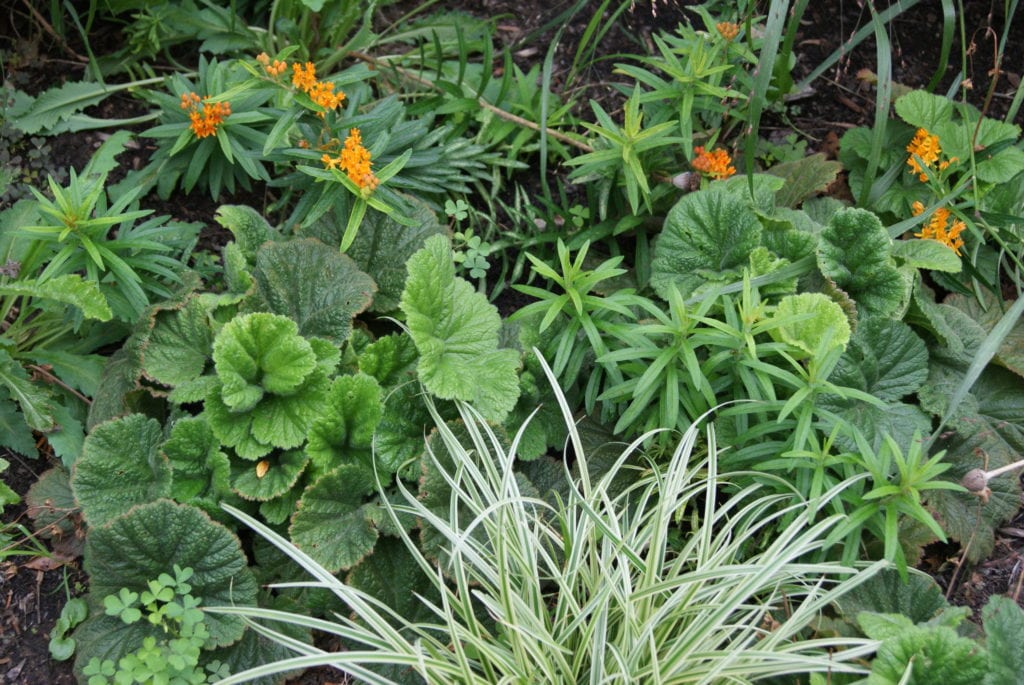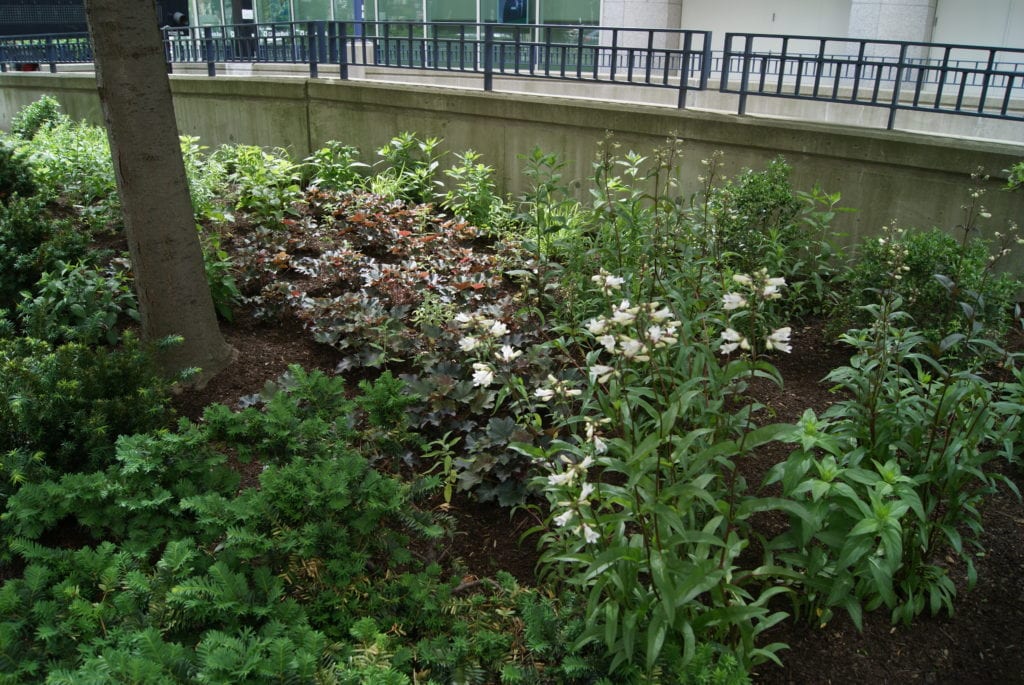by Darrah Cole
The Greenway horticulture staff is excited to have new, innovative planting designs installed along the length of The Greenway in downtown Boston, MA. Two narrow parcels along Surface Road near South Station and two others in the North End Park along Cross Street have been planted to create the end points of a Pollinator Ribbon. Along with large stretches of native perennials in the Wharf Park we are close to having a connecting series of landscapes that support beneficial insects and pollinators.
Inspired by concepts presented in the book Planting in a Post-Wild World by Claudia West and Thomas Rainer, the two hundred plus feet of narrow landscaping between Dewey Square and Chinatown preserved a portion of the existing trees and shrubs and added a wide variety of new perennial plants. Driven by the desire to add more pollinator and insect friendly plants to The Greenway, especially plants that support bees, moths and butterflies, we have dreamed of a pollinator link from end to end on The Greenway for a few years. Combining this idea with the sustainable design concept of using created plant communities for resilient landscapes is an exciting solution, energizing and invigorating this slice of newly added land along The Greenway.
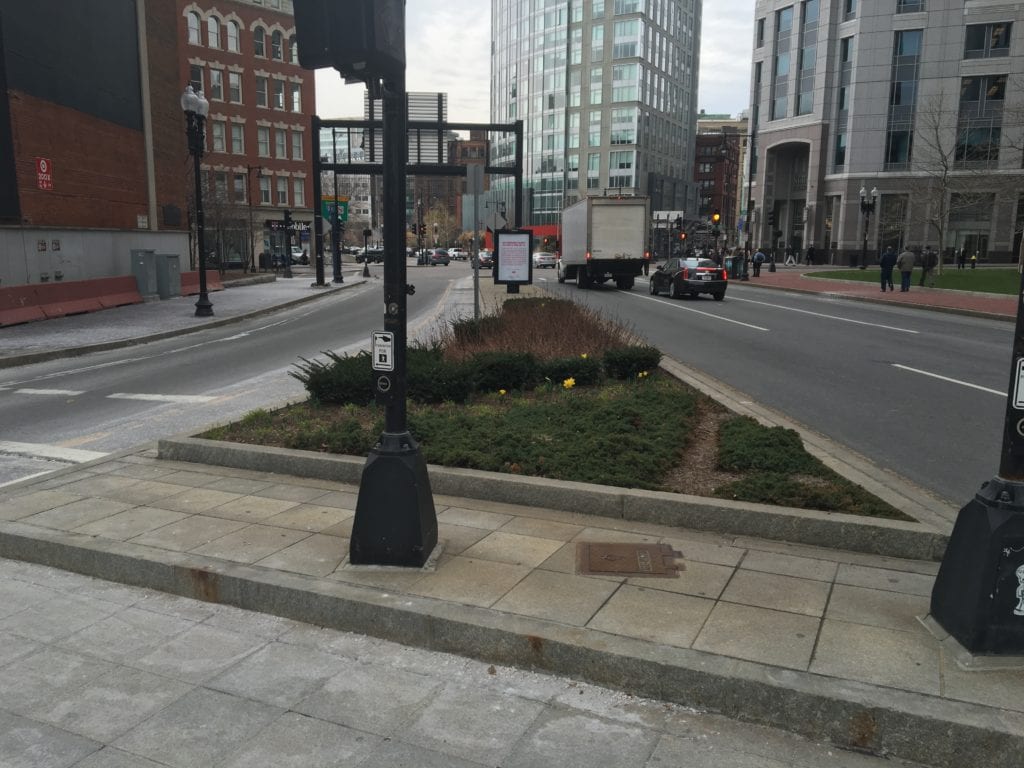
A small wedge-shaped garden shows patches of empty soil between plants before we revitalize the bed.
In both locations we started with an undulating ribbon of color overlaid between existing shrub layers, adjusting as needed. Next was the exercise of sifting through numerous pollinator friendly plant lists to find combinations that worked in graduating color schemes from yellows to golds, oranges to pinks and then to blues. Designing around the challenging site conditions, including wind and extreme variations in sun and shade, was the next step. The result was a big improvement over the largely empty soil of the previous plantings. Many of the plants came through the tough winter conditions and the roadside locations with flying colors. We are evaluating the overall success as this season continues, and while the few losses are not unexpected, the majority of plants are doing very well.
By attempting to mimic the natural habit and groupings of plants to create plant communities that are dense, lush and mutually supportive of each other, the landscape becomes more resilient. The combination of grasses and groundcovers with larger plants is intentional, creating a complex ecology both above and below the soil. About 65% of the plant species are native to northeast America, with the remaining percentage tried and true perennials and grasses. The native plants, especially the New England natives, support a broader range of wildlife and insects than the imported and hybrid selections.
These two Pollinator plantings at the opposite ends of The Greenway’s linear path through downtown Boston are subtly linked and knitted together by the all-native Wharf District Park. The eastern edge of the Wharf District, running parallel with Atlantic Avenue, is solely planted with North East native plants, chosen with the flora of the Boston Harbor islands in mind. A large percentage of the plants here function as both food and habitat sources for local insects. Of particular interest right now (mid-June) are the native Rosa virginiana, Magnolia virginiana, Baptisia australis, and Anemone canadensis, among others.
As with all our landscapes, we maintain this area organically and sustainably. Once established, the landscape is designed to require few inputs and minimal maintenance from year to year. We mulch these beds in spring with composted leaf mulch. This lighter cover is a better match for the tightly planted mix of perennials employed in these designs. The leaf mulch is spread by volunteers each spring, after the beds are cut back and winter debris cleaned out. Because the perennials are interplanted with ornamental and native shrubs, we cannot mow the material down, which would be simpler and faster than shearing and hand cutting.
We rely on a vibrant volunteer program to help us, especially with the particularly labor intensive jobs. Nearly 900 people volunteer with The Greenway Conservancy each year, including both individual and corporate groups. For this project volunteers helped with spring planting, 2016 fall bulb installation, 2017 spring clean-up and, finally, mulching. So far so good! Come visit The Greenway and look along the edges for our Pollinator Ribbon.
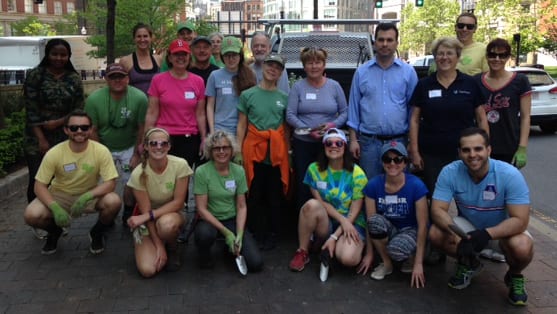
Every successful Greenway project relies on the help of dedicated volunteers like those who formed the Pollinator Ribbon planting crew.
Note: The Wharf District Park, mentioned above, is part of ELA’s Celebrating Native Plants Tour on both June 24 and August 12, 2017.
About the Author
Darrah Cole is Senior Horticulturist and Designer at The Greenway, a ribbon of parks running through the city of Boston. Before joining the Conservancy staff in 2011, Darrah managed private, historic estate gardens in Maine and Massachusetts and worked at Heronswood Nursery in Kingston, WA.
***
Each author appearing herein retains original copyright. Right to reproduce or disseminate all material herein, including to Columbia University Library’s CAUSEWAY Project, is otherwise reserved by ELA. Please contact ELA for permission to reprint.
Mention of products is not intended to constitute endorsement. Opinions expressed in this newsletter article do not necessarily represent those of ELA’s directors, staff, or members.


